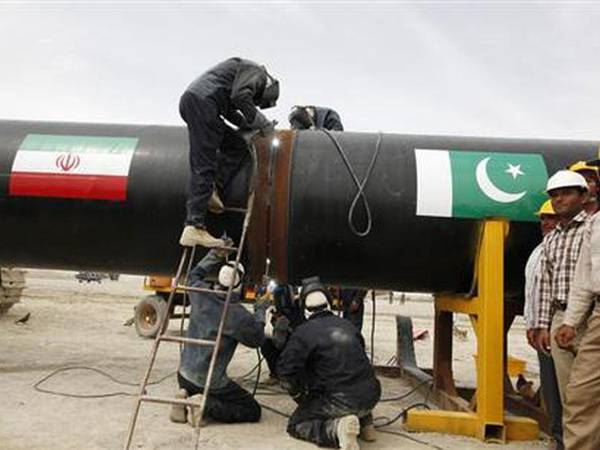Iran and Pakistan once again are aiming to revive a gas pipeline project that has been languishing for more than a decade, amid sanctions and bilateral issues between the two neighbors.
The Iran-Pakistan gas pipeline, commonly known as the Peace pipeline or IP Gas, is a complex initiative influenced by geopolitical tensions, economic factors, and international sanctions. Initially designed to transport natural gas from Iran to Pakistan, the project has encountered numerous challenges since its inception.
In March 2013, Presidents Zardari and Ahmadinejad inaugurated the project near Iran's Chabahar port, signaling the start of the USD 7.5 billion venture. However, progress stalled due to US sanctions on Iran, despite Iran completing its portion of the pipeline. Negotiations must conclude by March 2024 to avoid legal complications, with Islamabad having until September 2024 to fulfill its obligations. Both nations are exploring strategies to complete the pipeline outside the scope of US sanctions, emphasizing the project's importance for their national interests.
Pakistan has employed various legal and diplomatic means to avoid penalties and has requested a waiver from the US regarding the project. The completion of the pipeline is crucial for Pakistan's energy security and to meet its growing energy needs, fostering economic and commercial ties between the two countries.
Challenges
In order to meet Pakistan's growing energy demands and guarantee energy security, the pipeline is considered essential.
Despite resistance from Western partners, Pakistan has made progress in advancing the pipeline project. The initial phase, covering 80 kilometers from Gwadar to the Iranian border, has received government approval and funding. However, securing financing remains a significant obstacle, with speculation that China and Russia may provide funding for the Pakistani segment of the pipeline.
However, several challenges hinder the Iran-Pakistan gas pipeline project, including US sanctions, financial constraints, geopolitical conflicts, and operational delays. Overcoming these obstacles requires strategic planning and collaboration between the two nations.
Its projected expenses of USD 7.5 billion are causing delays in obtaining sufficient finance. Because regional dynamics influence progress and decision-making, geopolitical conflicts introduce an additional degree of complication.
Iran’s natural gas shortage
Iran faces domestic natural gas shortages, impacting its energy exports and oil production. The reliance on gas exports despite scarcity and rising local demand poses economic challenges and threatens internal energy security. Resolving Iran's energy crisis and easing international sanctions are essential for the pipeline's feasibility and completion.
Reduced gas output poses a danger to Iran's oil production, which is hampered by low investments and technological constraints. Iran's ability to maintain its oil production is threatened by its gas shortage and continuous exports, since the country must pump about 300 million cubic meters of gas per day into its aging oil reservoirs to maintain production.
Iran's oil fields face peril, with its domestic sector strained by the nation's heavy reliance on gas exports amid scarcity and mounting local demand. This predicament underscores Iran's challenge in balancing energy needs between exports and internal consumption amid gas shortages. The economic repercussions of Iran's gas scarcity extend beyond harming businesses and income sources, posing a threat to the country's internal energy security. Addressing Iran's expanding energy requirements demands substantial financial investments, advancements in science, and efficient energy management practices.
The expansion of QatarEnergy's liquefied natural gas (LNG) production further underscores the competitive landscape in the global energy market. Iran's ability to address its energy shortages and navigate international sanctions will determine the future of the Iran-Pakistan gas pipeline project. Despite ongoing efforts to address challenges, uncertainties persist regarding the project's viability until Iran's energy situation improves and sanctions are lifted.
The feasibility of the Iran-Pakistan gas pipeline project hinges on Iran's ability to address its domestic natural gas shortages and the lifting of international sanctions. The project's future remains uncertain without resolving Iran's energy challenges and sanction removal. Despite ongoing efforts through project management and diplomatic channels, numerous barriers persist. While completing the pipeline could benefit both nations by meeting Pakistan's energy needs and enhancing bilateral ties, its progression depends on Iran's energy situation and the removal of sanctions.
